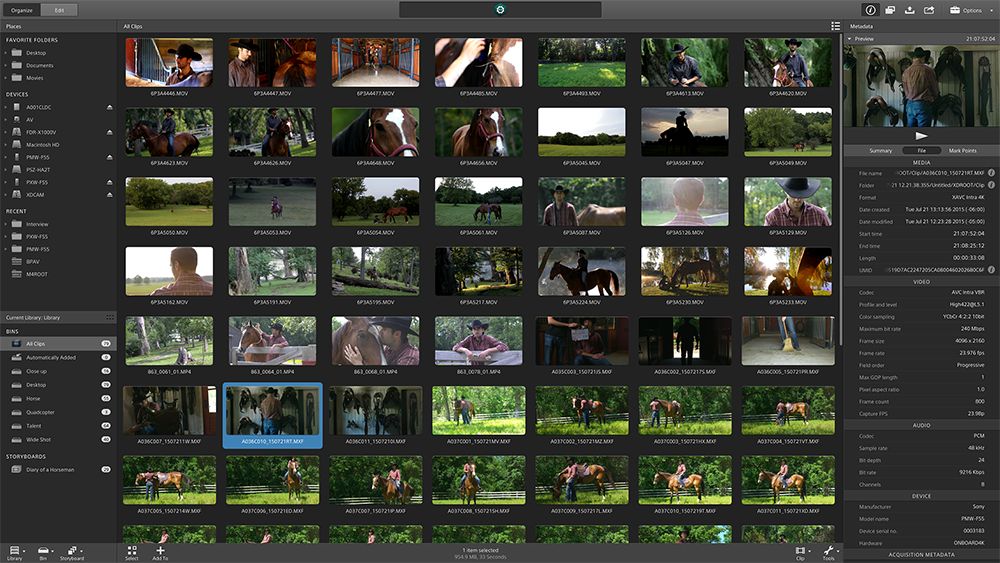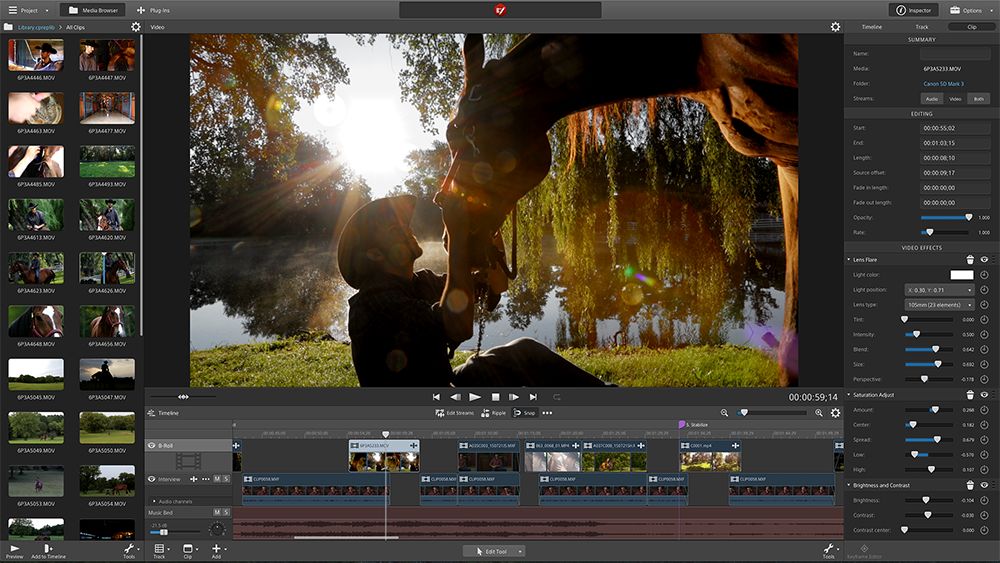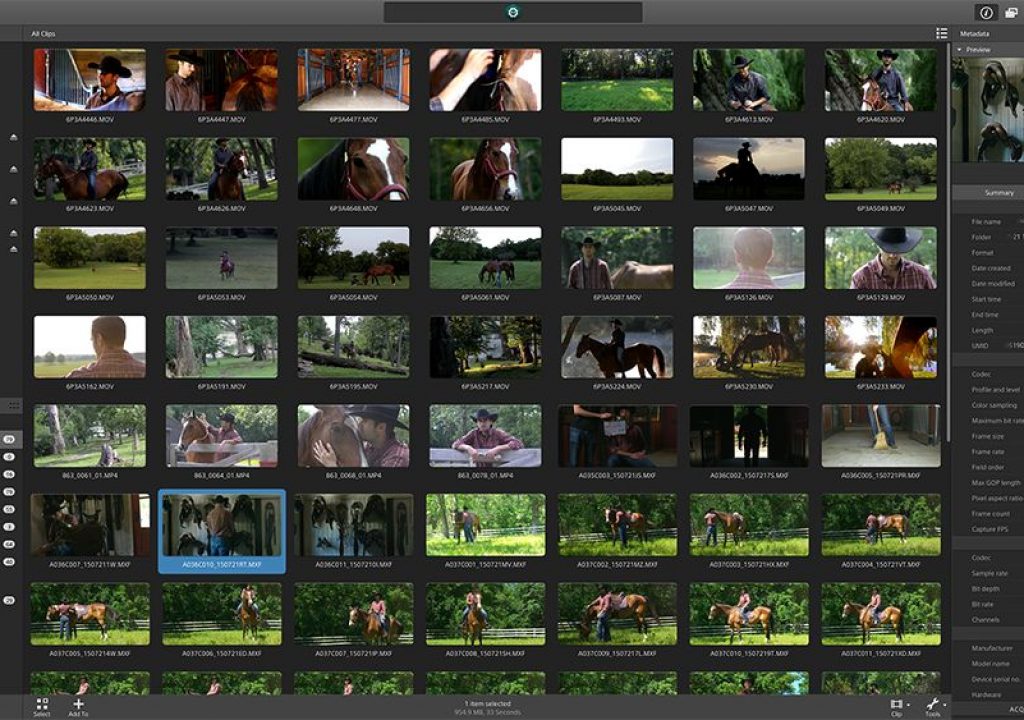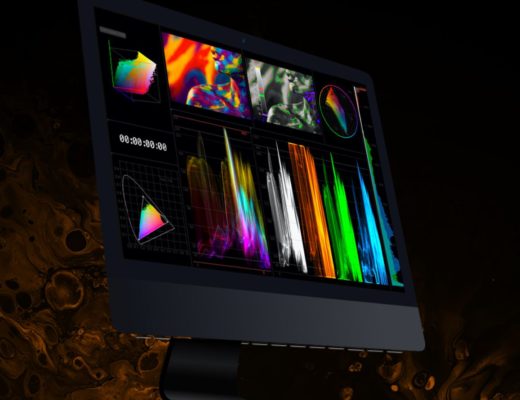The way in which technology has and continues to change how film and TV professionals work is a topic that we deal with on a frequent basis, and those changes are felt and seen throughout every level of the industry. I often joke that by the time everyone is ready to accept 4K as a standard, the conversation will have shifted to 8K, but the truth is we’ll likely be focused on some other display technology by that point. Or we’ll be onto 64K by then.
These changes have given professionals more powerful tools, but they’ve also changed the way those tools are used. The walls between production and post used to be very rigid and defined, but that is no longer the case in terms of both process and workflow. Much of that is because the tools we’re using have enabled those walls to come down. If you want to start cutting footage that has just been pulled off of a camera, there are no technical challenges that stand in your way.
The merging of production and post is another theme that’s been out there for awhile, but I’ve always been curious about how that actually would and does work. Sure, I understand that certain projects don’t want or need to have a “production” phase that takes place for a week followed by a “post” phase, which lasts for two weeks. They want to get everything done in a single week. But how can that happen on a logistical level? How is the footage going to be delivered to the editor? How much can the DIT help in this process? What role can the assistant editor take in this kind of environment?
I can’t say whether or not Sony was asking those same questions when they put together their Catalyst Production Suite, but in talking with Michael Bryant from Sony Creative Software, it certainly felt that way. I talked with him to discuss the upcoming release of Catalyst Prepare and Catalyst Edit, which are both going to see an update in early November. It was pretty insightful to hear about the upcoming improvements that are all designed to handle the logistics of organizing and editing files in a concise and simple manner, which ultimately defines the production-to-post phase of a project.

Catalyst Prepare interface
Michael showed me the new versions of Catalyst Prepare and Catalyst Edit, and the difference between versions is pretty stark. One of my first questions for him was about Browse though, as I had always heard of and saw Browse coupled with Prepare, but Browse is a much different and simpler product, which Michael explained in detail.
“Browse still exists, and we just put out an update for it,” he mentioned. “But Browse is limited in a way Prepare and Edit are not. First, Browse only works in Sony cameras, which is what it was designed for. Second, you can do some color correction in it, but that’s really only for a sanity check, because it affects all of the clips. It comes back to the fact that the original name for this product was “simple viewer”, and that’s really what it is. It allows you to visually browse your memory card. It was really about getting all of the Sony viewers into a single browser that was cross platform.”
Browse is completely free and is really a tool for a DIT or anyone on-set who needs to make sure everything is right with the footage they’ve just captured. I wanted to talk about how this content moved into post-production though, which meant we needed to focus on the updates to Prepare and Edit.
Helpfully enough, Prepare is all about preparing media while Edit is focused on actual editing, but it’s the specifics around each product that are relevant to dig into here. Both properties are built on the same system, which means they work together quite well, so that any of the work done in Prepare can automatically flow into Edit. Both products also look and work identically on Windows and Mac, and that’s a big difference from Vegas Pro, which is Windows only.
That’s a key thing to note, because it means anything in Prepare and/or Edit can be easily sent off to Media Composer, Final Cut, Premiere and of course to Vegas Pro. I mentioned that the technical challenges which prevented someone from immediately moving into a post-production phase are gone, but the days of being forced to use an entire suite or set of software products are going by the wayside as well, and that’s not something unique to Prepare and Edit.
Not too long ago, if you wanted to do something like bring your FCPX project directly into After Effects, you were out of luck. Now there’s software that allows you to do just that, and that mentality has given users incredible flexibility that they now expect to have. That flexibility is obvious in Prepare and Edit, but the folks at Sony Creative Software had a number of other things to consider with this release.
“We’ve gathered a lot of feedback around what people want with the tool, how they wanted to use it,” Michael said. “We talked with people all over the world, and overwhelmingly, they said there were too many clicks to get the job done. So we completely redesigned the UI.”
The simpler interface of Prepare is evident to anyone who has seen the old version, but the intuitiveness of the design is something you’ll pick up on immediately, whether you’ve used the program before or not. It’s something that would be as intuitive for a DIT as it would for an assistant editor, which is helpful since it handles transcoding in a very concise manner and allows you to see the metadata very easily.
The metadata that is being stored can be useful in ways that you never imagined though. GPS info is stored in everything that is shot, and you can bring up a map in Prepare to see exactly where that filming took place. Michael mentioned they were seeing this feature used quite a bit in the reality TV space, and I can just imagine how useful it would be for reshoots.
“Prepare is a quick way to view your media and the metadata associated with it if you’re out in the field, or even in the studio,” said Michael. “You can apply a LUT to it to get the proper color going, and one click will allow you to start doing a full volume check sum verified backup, and that will just happen in the background. You can also group or portion a file and then start to organize files as you want.”
Color correction tools are also available in Prepare and it actually allows a user to create a rough cut, whether that’s as a flattened file or as an EDL for your NLE.
Ultimately though, Prepare is all about giving the user the ability to easily setup and catalogue files in whatever manner is going to make sense for them and/or the post team. Whether the person setting everything up in Prepare is the DIT, an assistant editor, a PA, or just about anyone else, doesn’t matter because the process is going to be just as intuitive to all of them.
Once everything is settled in Prepare, you have the option to move over to Edit, and it actually took me a bit to get my head around what Edit was all about, even though everything you need to know about it is in the name. It’s fine that it’s an editing tool, but if I’m an editor and I’m using and comfortable with my favorite NLE, why would or should I bring anything from Prepare into Edit, instead of going right into my NLE?
“I talked to a guy who had that exact question,” Michael confided. “He’s an editor who loves Vegas. He wanted to know why he needed to bother with Edit. He uses Prepare all the time, so it really was that middle piece that wasn’t making sense for him. And what I did was point to the prep work he did in Prepare and how he didn’t have to render anything out or rewrap anything. It just comes right into Edit. And it’s interesting, because after he found that out, he thought he could do all he needed to do in Edit. You can bring anything and everything you do in Prepare elsewhere, you just need to do a little bit of work to do that, whereas in Edit you don’t. It just shows up.”
Ultimately though, the answer to the question of why not bring the project directly from Prepare into your NLE is that you don’t have to. Prepare and Edit don’t have to be used together, which is good, because while that process might work for some people, I know there are a lot of editors who are going to want the power and familiarity of their NLE. And they can have it.
As for Edit itself though, I don’t know if I would or should call Edit an “NLE Lite”, but that might be the best way to think of it. As far as Sony is concerned, Vegas is the craft editor, and many of the tools in it would never end up in Edit. It doesn’t have as many capabilities as the full NLE’s, but just like the editor Michael mentioned, maybe you don’t need those capabilities. And if you’re doing a lot of work in Prepare, Edit might be all you need to finish things off.

Catalyst Edit interface
“You could have 40% of the work done by the time you hand it off to an editor,” he mentioned. “Why dump all of the footage onto an editor? The essential story can be laid out beforehand, and then the craft editor can get in there and do what they do best.”
Much of this comes down to how many people are working on a project, the timetable, budget and what sorts of expectations have been set around the process. If the project is big enough to have a DIT, assistant editor and editor, I could easily see each person using Prepare, Edit and their given NLE, respectively. But they’d need to have a conversation before around the organization as well as what each of those people will be receiving and/or sending off. On the other hand, if it’s a tiny project and you’re handling all of those duties, it probably makes sense to use Prepare along with Edit or your NLE preference, not both.
As programmers love to say though, that’s a feature, not a bug. Since the products don’t have to work together utilizing them like this or in any other way is completely up to the user. You can purchase Prepare by itself but Edit is only available in the Suite, which includes Prepare and Edit. Prepare has functions and capabilities that users can take advantage of without needing to utilize Edit.
Finally, Michael talked about some of the features that were added with an eye on giving users more options but also on what the next generation of users will be wanting and even expecting.
“It’s touch enabled, and we watched people use it,” he concluded. “We saw they used a combination of touch and traditional operation. For instance, to add the media to the timeline and move media around there, they all used their fingers. To do the minute editing they grabbed a mouse, but it was all instinct. It was interesting to see the different things working for different people. The young guys in the room were all over the touch capability, and those kids have grown up with much different expectations around touch capabilities. That capability really makes this a next generation tool.”
The touch capabilities are great, and I have no doubt that the next generation of editors will use it to edit in a completely new way, which could open up some interesting creative decisions. Of course, those sorts of options are really the crux of the products. Some people might only want to use Prepare without Edit. That’s an option for them. Others might be only interested in Edit because it can simplify their post process. That’s an option for them.
The truth is we have no idea how professionals twenty or even five years from now are going to want to handle the technical and creative details around their project. Whatever their preferences, I can guarantee they’re not going to want to be forced into anything that has to be used in specific ways with other systems. Just like the production-to-post process has been customized, so has the way in which it happens. That expectation is only going to get more pronounced as time goes on.
For today though, Catalyst Prepare and Catalyst Edit seem to make a lot of sense for anyone who wants to figure out how they can move from production to post quickly and effectively. Tighter timelines and closer collaboration are a reality of creating content these days, and the Catalyst Suite contains tools that can help make such things work. Plus, you can download a free trial of Prepare and Edit to see if they’ll work for you.

Filmtools
Filmmakers go-to destination for pre-production, production & post production equipment!
Shop Now













